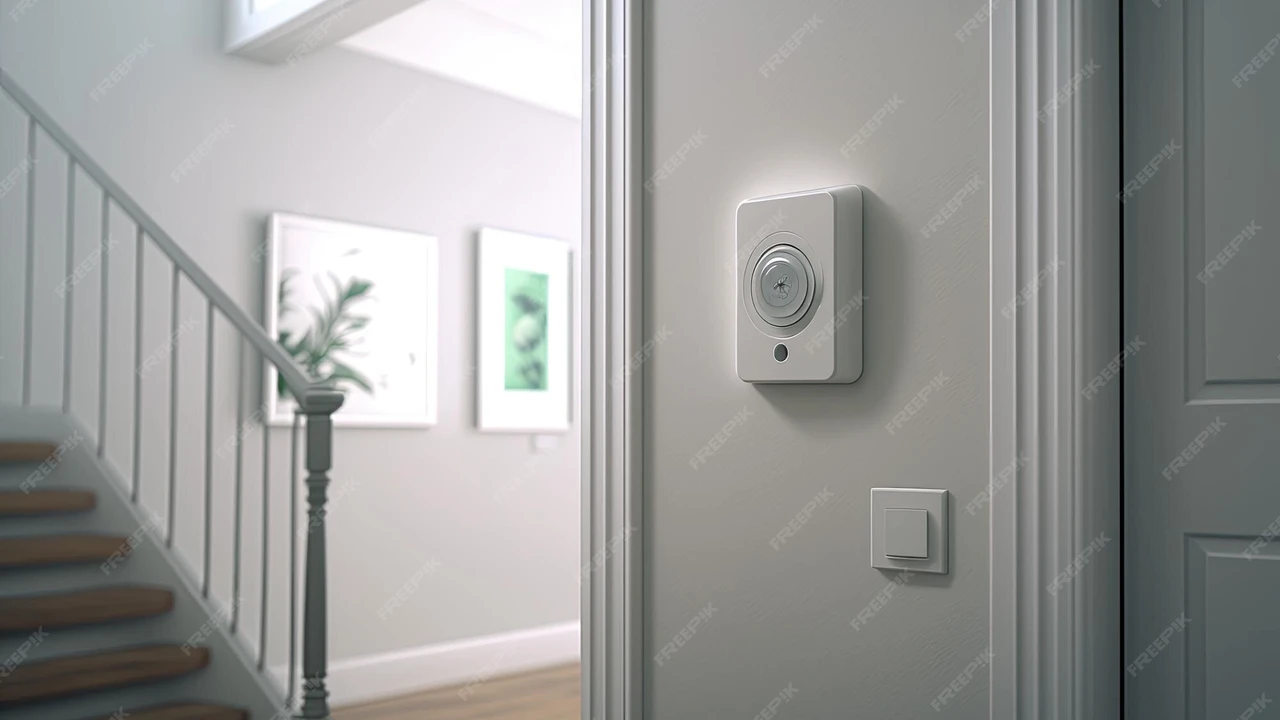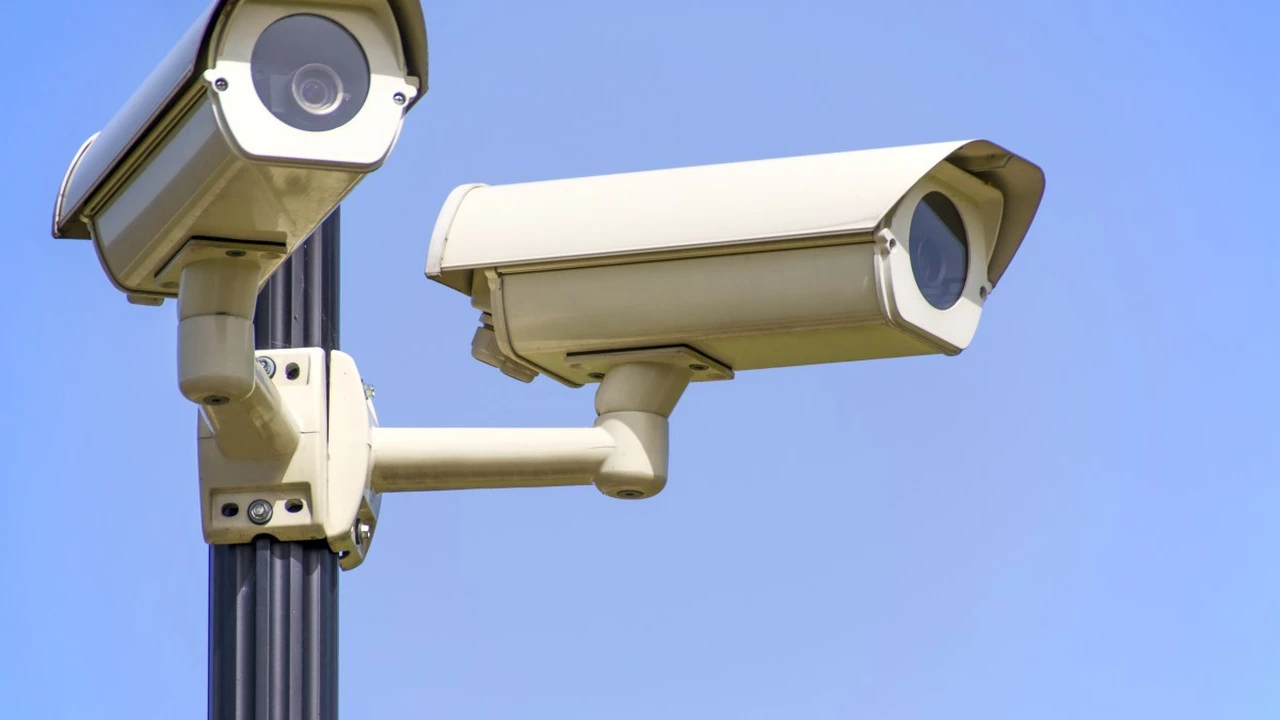Best CCTV Systems for Warehouses and Industrial Sites
Find robust CCTV systems designed for large warehouses and industrial sites offering extensive coverage and durability.

Find robust CCTV systems designed for large warehouses and industrial sites offering extensive coverage and durability.
Best CCTV Systems for Warehouses and Industrial Sites
Warehouses and industrial sites are unique environments when it comes to security. They're often sprawling, with multiple entry points, valuable inventory, heavy machinery, and a constant flow of people. This isn't your average home security setup; it demands a robust, comprehensive CCTV system that can handle the scale and specific challenges of these locations. We're talking about systems that can withstand harsh conditions, provide crystal-clear imaging over vast distances, and integrate with other security measures to give you total peace of mind. Let's dive into what makes a CCTV system ideal for these demanding environments and explore some top-notch options.
Understanding the Unique Security Needs of Warehouses and Industrial Sites
Before we get into specific products, it's crucial to understand why warehouses and industrial sites need specialized CCTV. It's not just about catching a thief; it's about preventing accidents, monitoring operational efficiency, ensuring compliance, and protecting assets. Here are some key considerations:
Extensive Coverage and Large Areas Surveillance
Warehouses can be massive, often with high ceilings and long aisles. Industrial sites might span acres, with outdoor storage, loading docks, and various buildings. This means you need cameras with wide-angle lenses, pan-tilt-zoom (PTZ) capabilities, and the ability to cover significant distances without losing image quality. You can't have blind spots; every corner needs to be visible.
Harsh Environmental Conditions and Durability Requirements
Unlike an office, these environments can be tough on electronics. Dust, dirt, extreme temperatures (both hot and cold), humidity, and even corrosive chemicals can be present. Outdoor cameras need to be weatherproof and vandal-resistant. You need cameras built to last, with high IP ratings (Ingress Protection) to keep out solids and liquids, and IK ratings for impact resistance.
High-Value Inventory and Asset Protection
Warehouses store goods, sometimes worth millions. Industrial sites house expensive machinery and raw materials. The primary goal of CCTV here is often to deter theft and provide irrefutable evidence if an incident occurs. This requires high-resolution cameras that can clearly identify individuals and objects, even in challenging lighting.
Operational Monitoring and Safety Compliance
Beyond security, CCTV is invaluable for operational oversight. You can monitor production lines, track inventory movement, ensure employees are following safety protocols, and investigate accidents. This helps improve efficiency and ensures compliance with health and safety regulations, which is a huge deal in industrial settings.
Integration with Existing Security Systems and Access Control
A standalone CCTV system is good, but an integrated one is better. The best systems can tie into access control, alarm systems, and even fire detection. This creates a unified security platform where all components work together, providing a more holistic and responsive security posture.
Key Features to Look for in Warehouse and Industrial CCTV Systems
Now that we know the challenges, let's talk about the features that address them:
High Resolution and Image Quality for Clear Identification
Forget 720p. For warehouses and industrial sites, you're looking for at least 4MP, but ideally 8MP (4K) or higher. This ensures you can zoom in on details like faces, license plates, and small objects without pixelation. Starlight or DarkFighter technology is also a plus for low-light performance.
Wide Dynamic Range WDR and Low Light Performance
Warehouses often have areas with extreme contrasts – bright loading docks next to dimly lit storage areas. WDR technology helps balance these light differences, ensuring you get a clear image across the entire scene. Excellent low-light performance (often achieved with larger sensors or specialized IR illuminators) is critical for nighttime surveillance.
Pan Tilt Zoom PTZ Capabilities for Dynamic Monitoring
PTZ cameras are your eyes on the ground, allowing security personnel to remotely pan, tilt, and zoom in on suspicious activity. For large areas, a few well-placed PTZ cameras can cover the same ground as many fixed cameras, making them incredibly efficient.
Robust Construction and Environmental Ratings IP IK
As mentioned, durability is key. Look for cameras with an IP66 or IP67 rating for dust and water resistance, and an IK10 rating for vandal resistance. This ensures they can withstand the rigors of an industrial environment.
Advanced Video Analytics and AI Features
This is where modern CCTV really shines. AI-powered analytics can do things like:
- Intrusion Detection: Alert you when someone enters a restricted area.
- Line Crossing: Trigger an alarm if someone crosses a virtual line.
- Object Left/Removed: Detect if an object has been left behind or taken.
- Facial Recognition: Identify authorized personnel or flag unknown individuals.
- License Plate Recognition LPR: Track vehicles entering and exiting the premises.
- Heat Mapping: Analyze traffic flow and identify bottlenecks.
These features reduce false alarms and help security personnel focus on real threats.
Scalability and Expandability for Future Growth
Your security needs might grow with your business. Choose a system that can easily add more cameras, storage, and features without a complete overhaul. This future-proofs your investment.
Centralized Management and Remote Access
Being able to manage your entire CCTV system from a single platform, whether on-site or remotely via a mobile app or web browser, is essential. This allows for quick response times and efficient monitoring.
Top CCTV System Recommendations for Warehouses and Industrial Sites
Let's look at some specific brands and products that excel in these demanding environments. Keep in mind that pricing can vary significantly based on the number of cameras, storage, installation complexity, and specific features chosen.
Hikvision Enterprise Solutions for Large Scale Deployments
Hikvision is a global leader in video surveillance, known for its extensive product range and advanced technology. Their enterprise solutions are perfect for large warehouses and industrial sites.
- Recommended Products:
- Hikvision DarkFighter Series IP Cameras: These cameras offer exceptional low-light performance, often producing color images in near darkness. Models like the DS-2CD5A46G0-IZHS (4MP) or DS-2CD5A85G0-IZHS (8MP) are ideal for critical areas. They come with WDR, H.265+ compression, and robust outdoor ratings.
- Hikvision AcuSense Series: These cameras use deep learning algorithms to distinguish between humans and vehicles, significantly reducing false alarms from animals or environmental factors. Great for perimeter protection.
- Hikvision PanoVu Series: For ultra-wide area surveillance, PanoVu cameras offer multi-sensor panoramic views, reducing the number of cameras needed to cover vast spaces.
- Hikvision DeepinMind NVRs: These Network Video Recorders (NVRs) are designed to work seamlessly with Hikvision's AI cameras, offering advanced video analytics processing and ample storage capacity.
- Use Cases: Perimeter security, loading dock monitoring, high-value inventory areas, production line oversight, large outdoor storage.
- Comparison: Hikvision offers a very comprehensive ecosystem, from cameras to NVRs and VMS (Video Management Software). Their AI capabilities are top-tier, and they offer excellent value for money given their feature set. They are often more budget-friendly than some European or American counterparts while still delivering high performance.
- Estimated Price Range: Individual cameras can range from $200-$1000+, NVRs from $500-$5000+, depending on channels and storage. A full enterprise system can easily run into tens of thousands of dollars, including installation.
Dahua Technology Advanced Surveillance for Industrial Environments
Dahua is another major player, offering a strong alternative to Hikvision with similar advanced features and competitive pricing.
- Recommended Products:
- Dahua WizSense Series IP Cameras: Similar to Hikvision's AcuSense, WizSense cameras focus on accurate human and vehicle detection, minimizing false alarms. Models like the IPC-HFW3849T1-AS-P (8MP) offer excellent resolution and AI features.
- Dahua Starlight Series: For superior low-light performance, Dahua's Starlight cameras are excellent, providing clear color images in minimal ambient light.
- Dahua ePoE Cameras and NVRs: ePoE (extended Power over Ethernet) allows for longer cable runs (up to 800m) than standard PoE, which is incredibly useful for sprawling industrial sites, reducing the need for additional power sources and network switches.
- Dahua WizMind Series: These are Dahua's high-end AI cameras and NVRs, offering advanced analytics like facial recognition, ANPR (Automatic Number Plate Recognition), and people counting.
- Use Cases: Large outdoor areas, long-distance surveillance, critical infrastructure monitoring, access point control, employee safety monitoring.
- Comparison: Dahua and Hikvision are often neck-and-neck in terms of technology and features. Dahua's ePoE is a significant advantage for very large sites. Both offer robust VMS solutions. The choice often comes down to installer preference or specific feature nuances.
- Estimated Price Range: Comparable to Hikvision, with individual cameras from $180-$900+, NVRs from $400-$4000+.
Axis Communications Premium Solutions for Critical Infrastructure
Axis is known for its high-quality, reliable, and often more premium solutions, particularly favored in critical infrastructure and government sectors where security is paramount.
- Recommended Products:
- Axis Q-Series Network Cameras: These are high-performance, robust cameras designed for demanding conditions. The Q16 series offers excellent image quality and advanced analytics, while the Q60 series provides high-end PTZ capabilities with exceptional zoom.
- Axis P-Series Network Cameras: A versatile range offering great performance for various indoor and outdoor applications, including vandal-resistant domes and bullet cameras.
- Axis Thermal Cameras: For environments where visibility is poor (smoke, fog, complete darkness), thermal cameras can detect heat signatures, making them invaluable for perimeter security and fire detection.
- Axis Camera Station VMS: Axis's own video management software provides a powerful and intuitive platform for managing their cameras, with advanced search and event management features.
- Use Cases: High-security zones, critical infrastructure, hazardous environments, advanced analytics for operational efficiency, integration with complex security ecosystems.
- Comparison: Axis cameras are generally more expensive than Hikvision or Dahua but are renowned for their build quality, reliability, and cybersecurity features. They often have a longer lifespan and are preferred for projects where long-term stability and advanced integration are key. Their open platform approach allows for easier integration with third-party VMS and analytics.
- Estimated Price Range: Individual cameras can range from $400-$3000+, NVRs/servers can be custom-built or use third-party solutions. A full Axis system is typically a higher investment.
Hanwha Vision formerly Samsung Wisenet Intelligent Surveillance
Hanwha Vision (formerly Samsung Wisenet) offers a strong portfolio of intelligent surveillance solutions, known for their robust analytics and ease of use.
- Recommended Products:
- Wisenet X Series: These cameras feature Hanwha's Wisenet 7 chipset, offering advanced AI analytics (object detection, attribute search), extreme WDR, and excellent low-light performance. Models like the XNV-8080R (5MP) or XNO-8080R (5MP bullet) are highly capable.
- Wisenet P Series: High-resolution cameras (up to 4K) with advanced analytics, ideal for detailed monitoring in critical areas.
- Wisenet Q Series: A more cost-effective range that still delivers solid performance for general surveillance in warehouses.
- Wisenet NVRs: Hanwha offers a range of NVRs that fully support their cameras' AI features, providing efficient storage and management.
- Use Cases: Inventory management, access control integration, advanced analytics for operational insights, general surveillance in medium to large industrial sites.
- Comparison: Hanwha offers a good balance of features, quality, and price. Their AI analytics are very strong, and their cameras are generally user-friendly. They are often seen as a strong mid-to-high-range option, sitting between the premium Axis and the value-driven Hikvision/Dahua.
- Estimated Price Range: Individual cameras from $300-$1500+, NVRs from $600-$6000+.
Choosing the Right System for Your Specific Needs
Selecting the best CCTV system isn't a one-size-fits-all decision. Here's how to approach it:
Conduct a Thorough Site Survey and Risk Assessment
Walk through your entire facility. Identify all entry points, high-value areas, blind spots, and potential hazards. Understand the lighting conditions, environmental factors, and existing infrastructure. A professional security integrator can help with this.
Determine Your Budget and Prioritize Features
CCTV systems can be a significant investment. Decide what your budget allows and then prioritize the features that are most critical for your operation. Do you need cutting-edge AI, or is basic high-resolution coverage sufficient for most areas?
Consider Integration with Existing Security Infrastructure
If you already have access control, alarm systems, or fire detection, look for CCTV systems that can seamlessly integrate with them. This creates a more powerful and efficient security ecosystem.
Plan for Scalability and Future Expansion
Think about your business's growth trajectory. Will you be expanding your facility or adding more inventory? Choose a system that can grow with you without requiring a complete overhaul.
Professional Installation and Ongoing Maintenance
For warehouses and industrial sites, professional installation is almost always recommended. These systems are complex, and proper placement, cabling, and configuration are crucial for optimal performance. Also, factor in ongoing maintenance and support to ensure your system remains operational and up-to-date.
Installation Considerations for Optimal Performance
Even the best cameras won't perform well if not installed correctly. Here are some key installation tips:
Strategic Camera Placement for Maximum Coverage
Avoid blind spots. Place cameras at all entry/exit points, loading docks, high-value storage areas, production lines, and perimeters. Consider camera height to prevent tampering and ensure a good field of view.
Network Infrastructure and Bandwidth Requirements
High-resolution cameras generate a lot of data. Ensure your network infrastructure (cabling, switches) can handle the bandwidth. PoE (Power over Ethernet) is highly recommended for simplifying wiring.
Adequate Lighting and Supplemental IR Illumination
While many cameras have good low-light performance, supplemental IR illuminators can significantly improve night vision in very dark areas. Proper general lighting also helps cameras perform better.
Power Backup Solutions for Uninterrupted Surveillance
Power outages can compromise your security. Invest in UPS (Uninterruptible Power Supply) systems for your NVRs and critical cameras to ensure continuous recording.
Data Storage and Retention Policies
Determine how long you need to store footage based on legal requirements, company policies, and operational needs. This will dictate the size of your NVR's hard drives or your cloud storage plan.
The Future of Warehouse and Industrial Site Security
The world of CCTV is constantly evolving. Here's what's on the horizon:
AI and Machine Learning for Predictive Analytics
Beyond just detecting events, AI will increasingly move towards predictive analytics, identifying patterns that suggest potential threats before they escalate. Think about systems that can flag unusual behavior or predict equipment failure based on visual cues.
Integration with IoT Devices and Smart Sensors
CCTV will become even more integrated with other IoT devices – environmental sensors, smart locks, drones, and robotics – creating a truly intelligent and automated security ecosystem.
Cloud-Based Surveillance and Edge Computing
More processing will happen at the 'edge' (on the camera itself), reducing bandwidth strain. Cloud-based storage and management will become even more prevalent, offering flexibility and scalability.
Cybersecurity for IP Camera Systems
As systems become more connected, cybersecurity becomes paramount. Manufacturers are focusing heavily on securing IP cameras and NVRs from cyber threats, and this will only intensify.
Securing a warehouse or industrial site is a complex task, but with the right CCTV system, you can significantly enhance safety, deter crime, and improve operational efficiency. By understanding your specific needs and investing in robust, intelligent solutions, you're not just buying cameras; you're investing in the future security and success of your business.
:max_bytes(150000):strip_icc()/277019-baked-pork-chops-with-cream-of-mushroom-soup-DDMFS-beauty-4x3-BG-7505-5762b731cf30447d9cbbbbbf387beafa.jpg)






